How To Do A Deltoid Injection: A Complete Guide
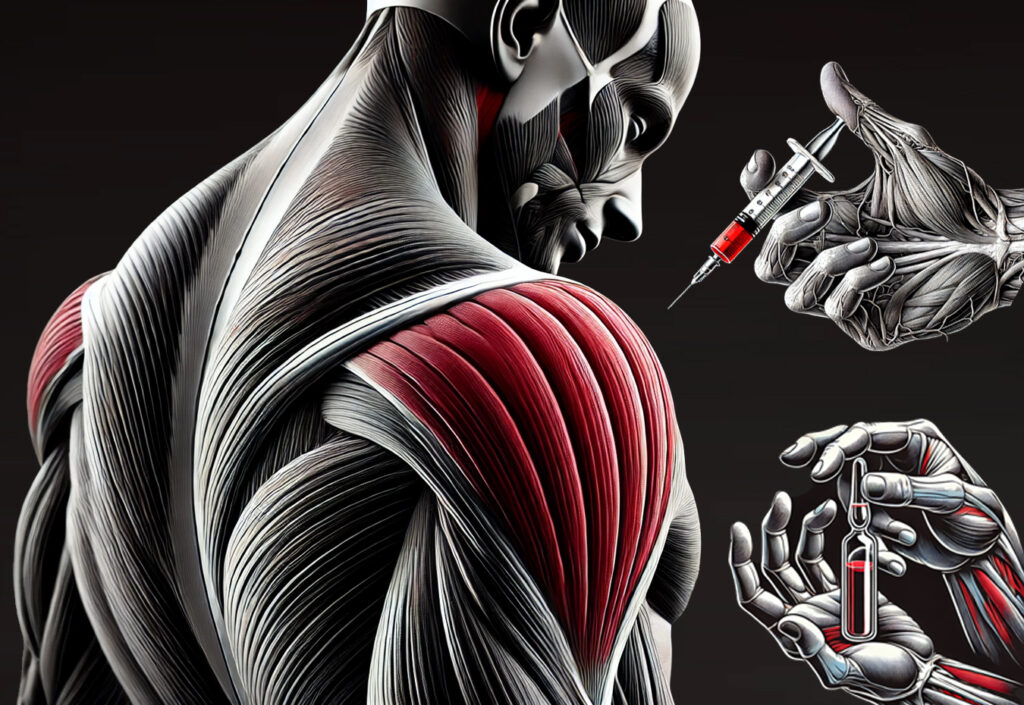
Last Updated On March 26, 2025
Are you looking to add another injection site to your rotation or simply want to learn how to perform a deltoid injection correctly? You’ve come to the right place. Deltoid injections are among the easiest and safest intramuscular injections to administer. This comprehensive guide will walk you through everything you need to know about deltoid injections, from precise site location to step-by-step technique.
What is a Deltoid Injection?

A deltoid injection is an intramuscular injection administered into the deltoid muscle, located on the upper outer portion of your arm. This injection site offers several advantages, including ease of access, relatively painless administration, and minimal risk of hitting major nerves or blood vessels.
The deltoid muscle forms the rounded contour of the shoulder and is responsible for arm abduction (moving your arm away from your body). Its location and tissue density make it ideal for the administration of many medications, including vaccines and, in some cases, testosterone replacement therapy (TRT).
For those looking to diversify their injection sites or who find other locations uncomfortable, the deltoid injection provides an excellent alternative that can be easily self-administered.
Deltoid Injection: Advantages and Considerations
Before performing a deltoid injection, it’s important to understand its specific benefits and limitations compared to other injection sites:
Advantages
- Ease of access: The deltoid can be easily reached for self-administration
- Safety: The area contains few major nerves or blood vessels
- Less painful: Many patients report less discomfort compared to other sites
- Quick absorption: Medications are generally absorbed rapidly from this site
- No need to remove clothing: Unlike gluteal injections, deltoid injections require minimal undressing
Considerations
- Limited volume capacity: The deltoid can safely accommodate smaller volumes (typically up to 1ml)
- Smaller muscle mass: Not ideal for larger volume injections or particularly viscous medications
- TRT specific note: While the deltoid can be used for testosterone injections, some doctors still prefer the ventrogluteal site for TRT due to its larger muscle mass
Equipment Needed for Deltoid Injections
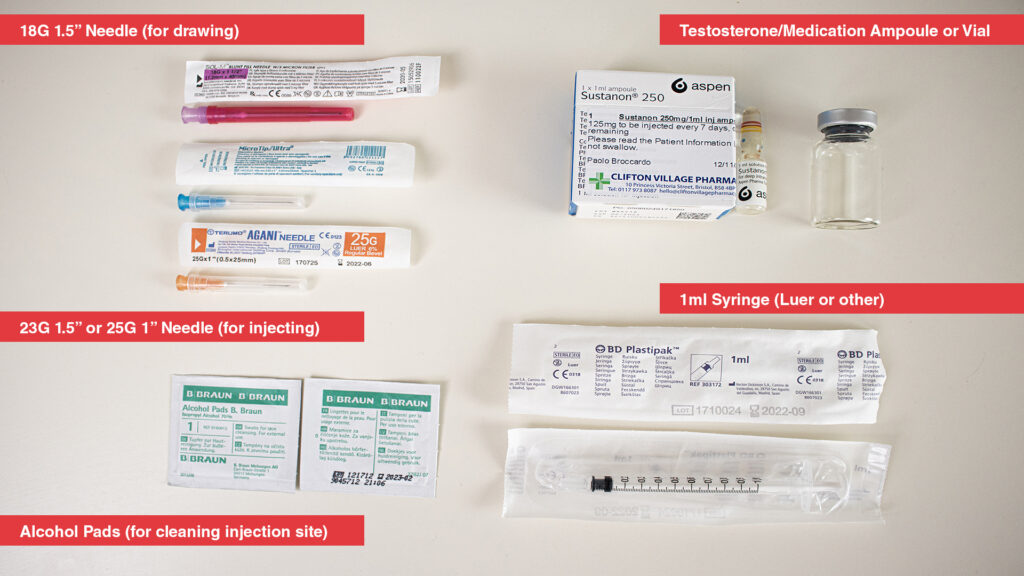
Proper equipment selection ensures a safe, comfortable deltoid injection. Here’s what you’ll need:
Essential Supplies
- Your medication (testosterone vial/ampule or other prescribed medication)
- Drawing needle (typically 18G, 1.5 inch)
- Injection needle (typically 25-27G, 1 inch)
- 1ml syringe (or appropriate size for your medication dose)
- Alcohol swabs/pads
- Cotton balls or gauze (optional)
- Bandage/adhesive bandage (optional)
- Sharps container for disposal
Needle Selection Guide
For deltoid injections, needle selection is particularly important:
- Drawing needle: 18G, 1.5 inch—The larger gauge facilitates quicker and easier drawing of medication
- Injection needle: 25G, 1 inch—This is the standard recommendation for deltoid injections in adults
The 25G, 1-inch needle is generally appropriate for most adults receiving deltoid injections. The finer gauge (25G) minimizes pain while still effectively delivering medication to the muscle. The 1-inch length is usually sufficient to reach the muscle through subcutaneous tissue in most adults.
For individuals with more subcutaneous tissue in the deltoid area, a slightly longer needle (1.5 inch) might be recommended, while very lean individuals might use a shorter needle (5/8 inch).
How to Locate the Deltoid Injection Site
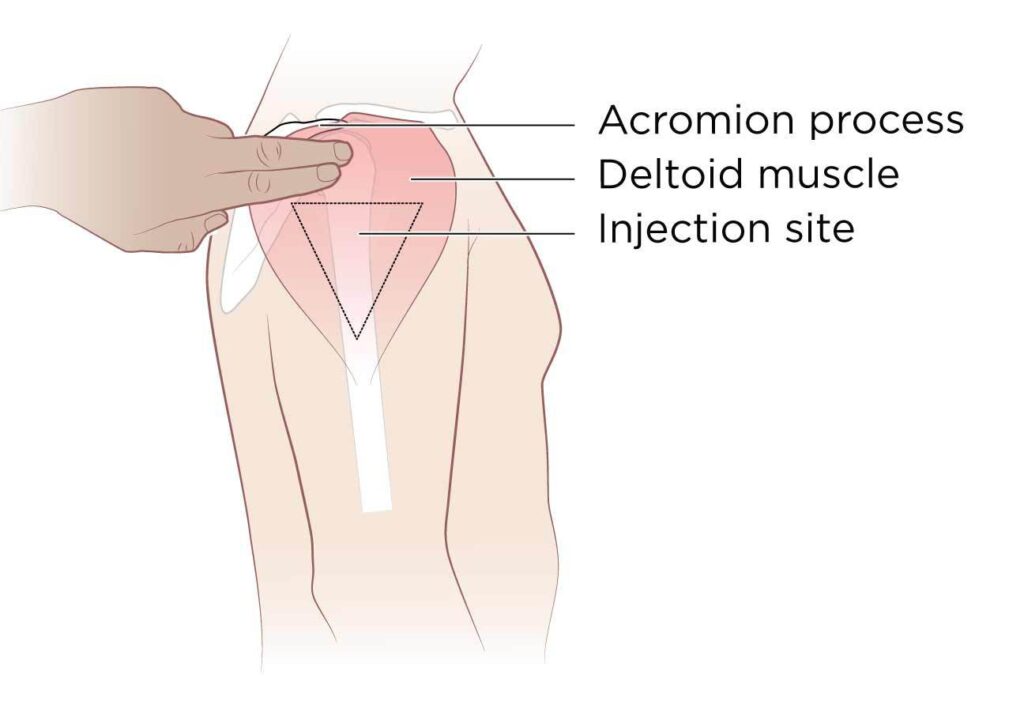
Proper identification of the deltoid injection site is crucial for safety and effectiveness. The ideal injection area is a triangular region on the upper arm:
Using Anatomical Landmarks
- Locate the acromion process: This is the bony prominence at the top of the shoulder
- Find the deltoid tuberosity: This is located about 2-3 finger widths above the armpit
- Identify the middle third of the upper arm: The injection site is in the middle third of the distance between these two points
The correct injection site forms an inverted triangle on the lateral (outer) aspect of the upper arm. This area is free from major nerves and blood vessels, making it a safe injection location.
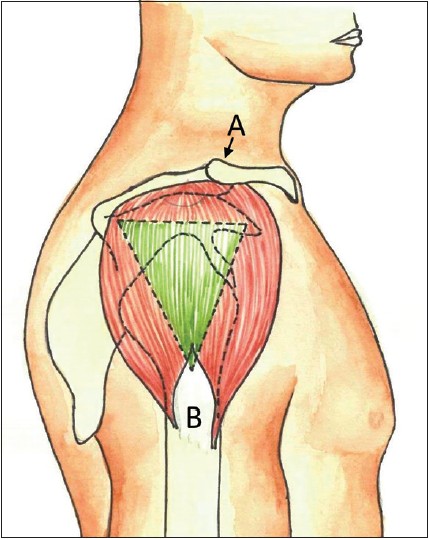
Visual Reference Points
For self-administration, you can locate the deltoid injection site by:
- Standing in front of a mirror with your arm relaxed at your side
- Visualizing a triangle with its base at the acromion (top of shoulder) and its point about three finger-widths below
- Staying on the outer (lateral) portion of the arm, avoiding the front and back
- Ensuring you’re in the middle third of the upper arm—not too high (near the shoulder joint) and not too low (near the armpit)
A simple way to find this site is to place four fingers across the shoulder with the top finger along the edge of the acromion. The injection site is just below your bottom finger, on the outer aspect of the arm.
Deltoid Injection Technique: Step-by-Step Guide
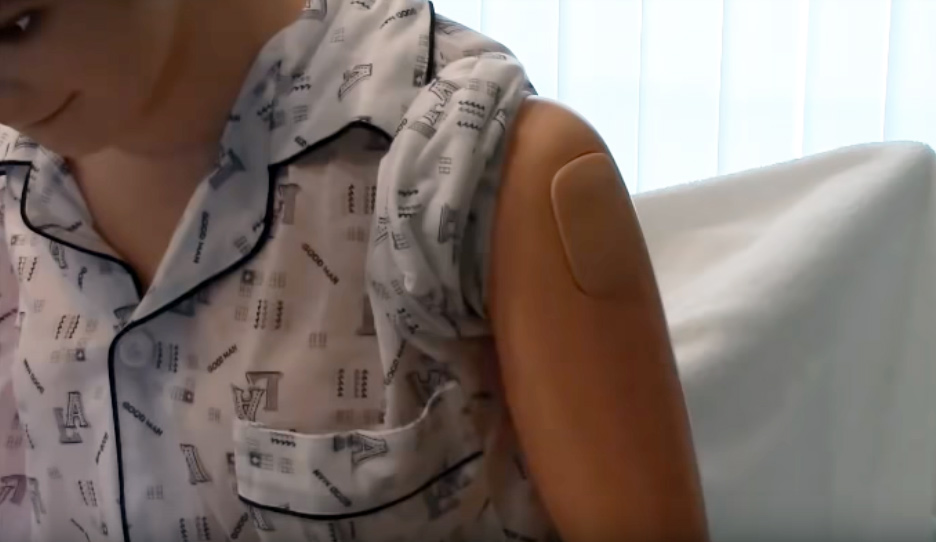
Follow these detailed steps for a safe, effective deltoid injection:
Preparation
- Wash your hands thoroughly with soap and water
- Gather all supplies and place them on a clean surface
- Draw up medication using the 18G needle:
- Attach the 18G needle to the syringe
- Draw medication from the vial or ampule (wipe vial top with alcohol if needed)
- Remove air bubbles by holding the syringe upright, tapping to move bubbles to the top, and carefully pushing the plunger
- Switch to the injection needle by removing the 18G needle and attaching the 25G, 1-inch needle
- Prepare alcohol swabs by opening the packages
Positioning
- Sit or stand comfortably in front of a mirror if possible
- Expose the deltoid area by wearing a sleeveless shirt or rolling up your sleeve
- Relax the arm receiving the injection to minimize discomfort
Injection Procedure
- Clean the site: Use an alcohol swab to clean the injection area with a circular motion, working outward from the center. Allow to dry completely (about 30 seconds)
- Hold the syringe: Grip it like a dart between your thumb and forefinger
- Insert the needle: In one smooth motion, insert the needle perpendicular (90-degree angle) to the skin surface
- Aspirate (optional): While aspiration (pulling back slightly on the plunger to check for blood) is traditional, many medical professionals no longer consider it necessary for deltoid injections due to the site’s safety profile
- Inject the medication: Slowly push the plunger to inject the medication (taking approximately 5-10 seconds)
- Remove the needle: Pull the needle out at the same angle it went in
- Apply pressure: Use a cotton ball or gauze to apply gentle pressure to the site
Post-Injection Care
- Dispose of the needle immediately in a sharps container
- Apply a bandage if necessary (though deltoid sites typically bleed very little)
- Massage gently around (not directly on) the injection site to help disperse the medication if recommended for your specific medication
- Monitor for reactions: Watch for any unusual redness, swelling, or pain
With proper technique, deltoid injections should cause minimal discomfort. Many patients report that this site is less painful than other intramuscular injection locations.
Safety Considerations and Best Practices
Pain Management
- Ensure the muscle is relaxed during injection
- Use a swift, confident motion when inserting the needle
- Allow alcohol to dry completely before injecting to avoid stinging
- Consider applying ice briefly to numb the area before injection
Infection Prevention
- Never reuse needles or syringes
- Always clean the injection site properly
- Check medication for clarity and expiration date
- Maintain a clean workspace for preparation
- Keep injections supplies sealed until ready to use
Site Rotation
Even within the deltoid area, subtle rotation is important:
- Alternate between left and right arms
- Slightly vary the exact injection spot within the safe triangular area
- For those on regular injections, consider rotating among different approved sites (deltoid, ventrogluteal, vastus lateralis)
- Keep a log of injection sites used
When to Seek Medical Help
Contact a healthcare provider if you experience:
- Persistent pain lasting more than 48 hours
- Increasing redness, warmth, or swelling
- Fever or chills after an injection
- Unusual discharge from the injection site
- Muscle weakness or numbness
Advantages of Adding Deltoid Injections to Your Rotation
For those on regular injection schedules, such as TRT patients, adding the deltoid site to your rotation offers several benefits:
- Gives other sites time to recover: Rotating injection sites reduces tissue damage and scar tissue formation
- Provides options for different situations: The deltoid is accessible when traveling or in situations where exposing other injection sites might be inconvenient
- Reduces injection anxiety: Many patients find deltoid injections less intimidating than other sites
- Potentially less painful: The deltoid area often offers a less painful injection experience
Conclusion
The deltoid injection site represents one of the safest and most accessible options for intramuscular injections. By properly identifying the site, using appropriate equipment, and following the step-by-step technique outlined in this guide, you can administer injections with minimal discomfort and risk.
Remember that practice improves technique—many find that deltoid injections become easier and more comfortable over time. If you’re new to self-administration, consider having a healthcare professional demonstrate the technique first or watch instructional video demonstrations.
For those on TRT or other regular injection therapies, adding the deltoid to your injection site rotation can provide valuable benefits while giving other sites time to recover. Always consult with your healthcare provider before making changes to your injection routine.